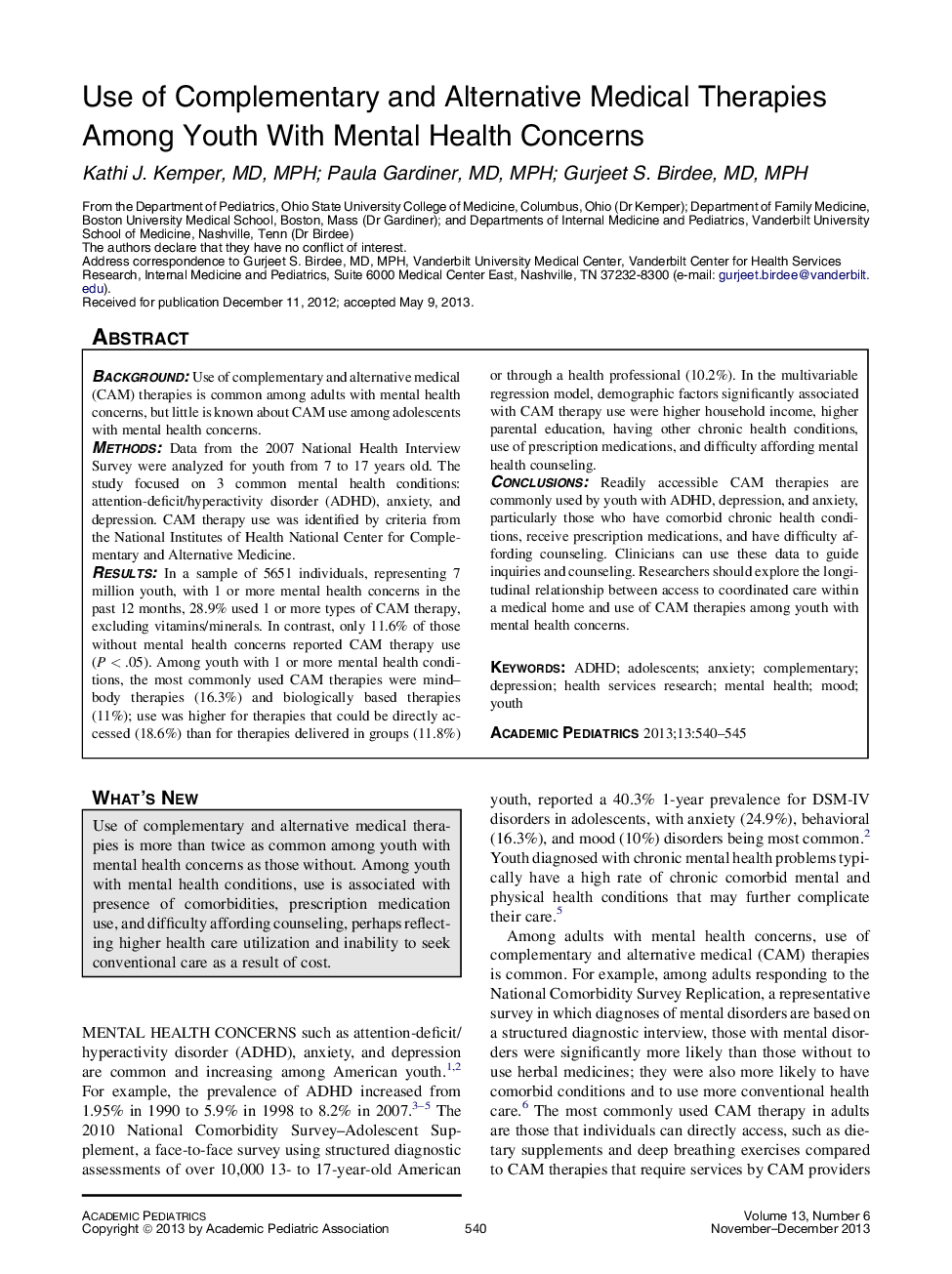| Article ID | Journal | Published Year | Pages | File Type |
|---|---|---|---|---|
| 4139274 | Academic Pediatrics | 2013 | 6 Pages |
BackgroundUse of complementary and alternative medical (CAM) therapies is common among adults with mental health concerns, but little is known about CAM use among adolescents with mental health concerns.MethodsData from the 2007 National Health Interview Survey were analyzed for youth from 7 to 17 years old. The study focused on 3 common mental health conditions: attention-deficit/hyperactivity disorder (ADHD), anxiety, and depression. CAM therapy use was identified by criteria from the National Institutes of Health National Center for Complementary and Alternative Medicine.ResultsIn a sample of 5651 individuals, representing 7 million youth, with 1 or more mental health concerns in the past 12 months, 28.9% used 1 or more types of CAM therapy, excluding vitamins/minerals. In contrast, only 11.6% of those without mental health concerns reported CAM therapy use (P < .05). Among youth with 1 or more mental health conditions, the most commonly used CAM therapies were mind–body therapies (16.3%) and biologically based therapies (11%); use was higher for therapies that could be directly accessed (18.6%) than for therapies delivered in groups (11.8%) or through a health professional (10.2%). In the multivariable regression model, demographic factors significantly associated with CAM therapy use were higher household income, higher parental education, having other chronic health conditions, use of prescription medications, and difficulty affording mental health counseling.ConclusionsReadily accessible CAM therapies are commonly used by youth with ADHD, depression, and anxiety, particularly those who have comorbid chronic health conditions, receive prescription medications, and have difficulty affording counseling. Clinicians can use these data to guide inquiries and counseling. Researchers should explore the longitudinal relationship between access to coordinated care within a medical home and use of CAM therapies among youth with mental health concerns.
